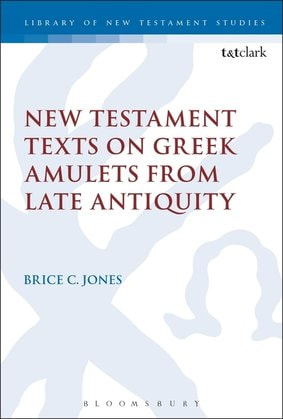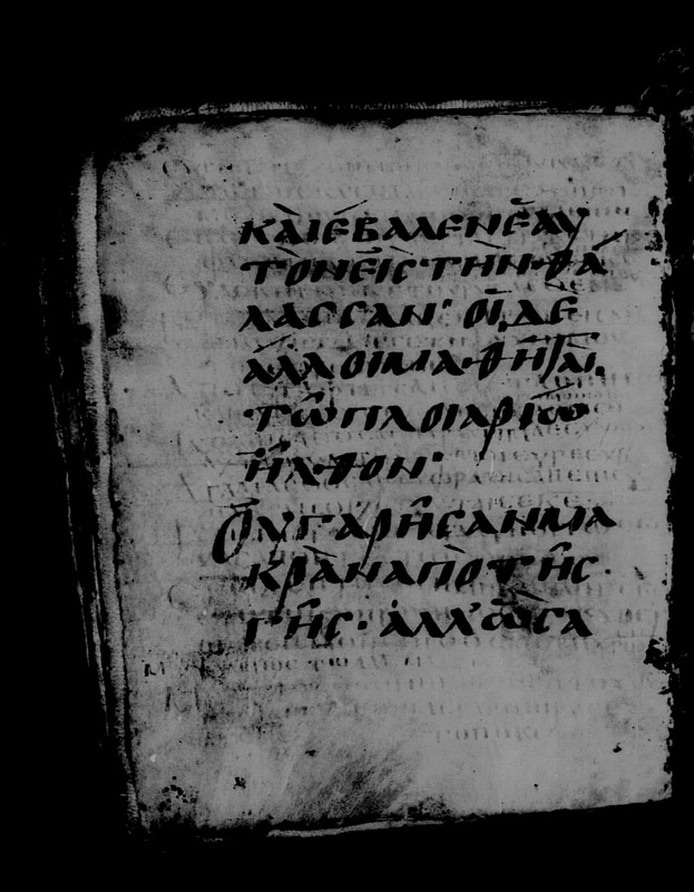|
In my last blog post announcing the digitization of the manuscripts from St. Catherine's monastery, I posted an image of Greek Manuscript 212, or GA Lectionary 846, a ninth century Greek liturgical codex containing the Gospels and the Apostolos, written in a sloping "Slavonic uncial" script. I want to make two observations about this manuscript here and then tell you about an exciting research project. First, it is a very small codex in dimensions: 14.5 (H) x 11.7 (W) cm. As a disclaimer: I do not study Greek manuscripts that are quite this late, but I do know that most lectionaries were intended for public reading, and so the format is somewhat surprising. Perhaps some of my readers will know just how atypical the dimensions are for Greek lectionaries from this period. Second, I noticed that this codex is a palimpsest, meaning that there is an "undertext" that has been wiped/washed away to make space for the "uppertext" which now stands. Scribes typically repurposed majuscule manuscripts for liturgical ones. Take a look at this photo from folio 51, which I have manipulated slightly in order to highlight the palimpsestic features: The 1994 Kurzgefasste Liste indicates that the undertext may be from the Psalms but there is a question mark there (“l 846: untere Schrift Psalmen (?)”). This script of this undertext is obviously older, perhaps dating to the 7th century.
Significantly, as part of the Sinai Palimpsests Project (SPP), the monastery is using spectral imaging to read, identify, and date erased texts found in palimpsests housed at the monastery, of which Greek 212 is one of more than 160 palimpsests. The results of this project will be significant. We await to see the full results of this project, but I have a strong feeling that some of the findings will be significant. Some of the incredible discoveries have already been listed on their website. I will update readers on this exciting project as I learn them!
7 Comments
Calogero Miceli
5/9/2017 08:57:53 pm
Hey Brice, this looks really interesting! Looking forward to see what significant discoveries are made.
Reply
Daniel Galadza
5/10/2017 05:52:02 pm
Awesome blog! The contents of the lectionary are described in greater detail than Aland's Kurzgefasste Liste here: https://www.academia.edu/20433611/_Two_Greek_Ninth-Century_Sources_of_the_Jerusalem_Lectionary_Sinai_Gr._212_and_Sinai_Gr._N.E._MГ_11_Bollettino_della_Badia_Greca_di_Grottaferrata_III_s._11_2014_79_111
Reply
Daniel Galadza
5/10/2017 05:53:46 pm
Glad to have come across your blog! The overtext of the manuscript is described here: https://www.academia.edu/20433611/_Two_Greek_Ninth-Century_Sources_of_the_Jerusalem_Lectionary_Sinai_Gr._212_and_Sinai_Gr._N.E._MГ_11_Bollettino_della_Badia_Greca_di_Grottaferrata_III_s._11_2014_79_111
Reply
5/10/2017 09:32:18 pm
Excellent, Daniel! Thanks for sharing your article, which gives some great context for this particular manuscript. At least part of the undertext from the folio above is from Ps. 39. Lines 13-15 are from Ps. 39:16-17: Εὖγε εὖγε. ἀγαλλιάσαιντο καὶ εὐφρανθείησαν ἐπὶ σοὶ πάντες οἱ ζητοῦντές σε, κύριε.
Reply
James Snapp Jr
link
9/28/2017 09:17:04 pm
Brice,
James Snapp Jr
link
5/11/2017 01:06:45 pm
Brice,
Reply
Your comment will be posted after it is approved.
Leave a Reply. |

Available at Amazon!
Archives
June 2020
Categories
All
|
